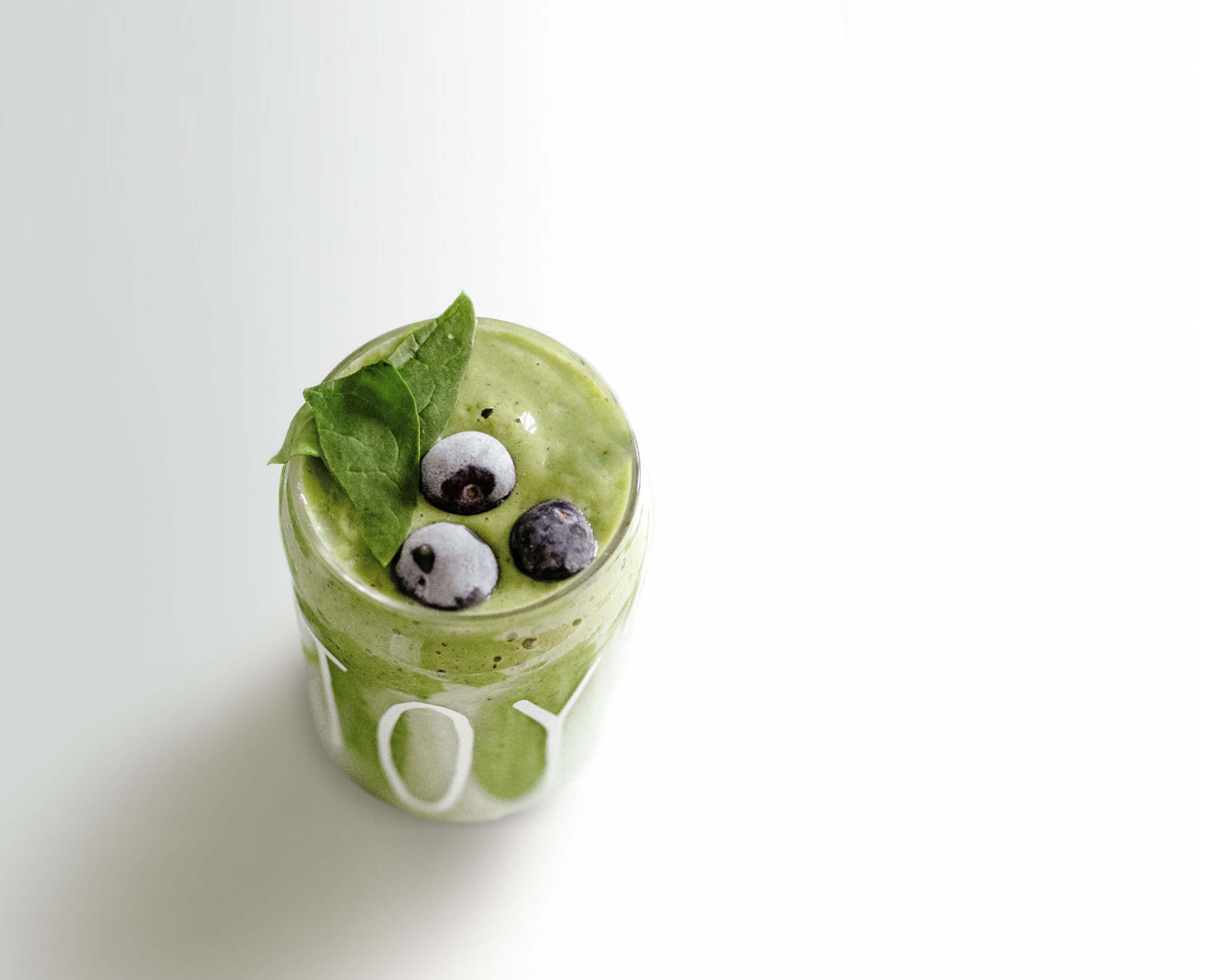The Science Behind Satiety Now
Discover the science behind Satiety Now—a natural approach to managing hunger and promoting weight loss. Using GLP-1, a key hormone that regulates appetite, Satiety Now blends carefully selected ingredients to stimulate its production and help control appetite.

The number of people who are overweight or obese continues to rise, and concomitant comorbid illnesses continue to be a major contributor to healthcare costs and patient well-being. The pathophysiology of obesity is complex, and multiple factors have been blamed for the continued tipping of our scales. One thing is for certain, we eat substantially more calories than we did 50 years ago.1
Our increased calorie consumption is in part due to more available calories but there also seems to be an issue with hunger that drives us to consume. Calorie-restriction diets have been around for many years, and while weight loss is possible, long-term weight regain is the norm, and hunger is the culprit.
For many years, the only long-term hope for sustained weight loss was bariatric surgery. Bariatric surgery is partly restrictive and controls the quantity of food that can be consumed, but the surgery also has real effects on hormones that affect satiety.
One peptide hormone is of particular interest: GLP-1. It was noted that gastric bypass patients have rapid improvements in glucose control, and, among other factors, it was noted that there is a rise in GLP-1 post gastric bypass that partly explains this beneficial effect on blood sugar.2
During a gastric bypass, food is routed to the mid jejunum, bypassing the duodenum and proximal jejunum, and allowing early delivery of partially undigested food to the ileum. The ileum has nutrient-sensing cells, called incretin or L cells, that in response to macronutrient exposure, produce GLP-1.3
This phenomenon is called “the ileal brake”. When food is able to reach the ileum partially undigested, it can then stimulate secretion of GLP-1 which in turn slows gastric emptying and limits hunger.
The ileal brake has been verified by tube feeding fats to the distal ileum in humans and measuring response. The tube through the nose can bypass digestion in the earlier parts of the intestine, and we do in fact see a rise of GLP-1 with the delivery of fats and amino acids to the distal small bowel.4
GLP-1 was able to be synthetically derived from the venom of Gila Monsters5. This led to the development of Byetta and then eventually led to the development of semaglutide, liraglutide, and tirzepatide, GLP-1 analogs for weight loss, and the weight loss has been impressive.6
The success of GLP-1 analogs has led to huge nationwide/worldwide shortages and unbelievable costs for insurers and consumers as these meds are very expensive. The question then becomes: can we replicate the ileal brake with natural products?
Ingredient by Ingredient. Science, Not Fiction
Considering the science behind the stimulation of the GLP-1 peptide hormone, we have carefully selected -always supported by rigorous scientific studies- a series of ingredients to be part of the natural meal replacement formula and the other products within the Satiety Now family.
Let’s start by dissecting the natural meal replacement formula and explaining the reasons for choosing each element.
We know that fat stimulates the incretin cells, but most fat is absorbed in the proximal jejunum. It turns out that studies -including randomized controlled trials with crossover- have shown that eating greens can stimulate GLP-1 production and consequently control hunger.7
The theory is that thylakoids in the chlorophyll of the plant interfere with the enzyme lipase’s ability to break down fat, allowing more fat to reach the terminal ileum, and thereby interacting with the incretin cells.

We chose powdered spinach as our green champion because randomized control trials have shown that thylakoid supplementation from spinach extract can cause secretion of GLP-1, and consequently aid with satiety and, ultimately, weight loss.8

Plus, Satiety Now blends powdered peanuts and ground flaxseed, and both work together with the powdered spinach.
The monounsaturated and polyunsaturated fat from the nuts and flaxseeds can -because the spinach blocks the enzyme that breaks them down in the first part of the small intestine- evade absorption. Then the fats are able to get to the distal small intestine and stimulate the secretion of GLP-1.
But this is not the only mechanism of naturally stimulating the incretin cells. In fact, our gut microbiome has a role in both metabolism and satiety via influences on GLP-1 secretion from intestinal incretin cells.9
Studies have shown that short-chain fatty acid propionate stimulates GLP-1 production by small bowel and colonic enteroendocrine L cells.10
So, we included inulin to the natural meal replacement formula. The reason? In a human trial, a special ester of propionate and inulin was given to allow delivery of the propionate to the L cells in the ileum causing a rise in GLP-1 and prevention of weight gain.11
It’s worth mentioning that we selected a special inulin that produces less bloating and still helps support the growth of bacteria that can stimulate GLP-1 secretion.12

Besides, it is interesting to note that in other studies inulin alone may have a similar effect because it is a fermentable fiber that can feed the microbiome and thereby develop flora that secretes propionate and other short-chain fatty acids, which in turn stimulate GLP-1 secretion.13
Plátano cuadrado
El sustituto de comida natural Satiety Now también contiene un tipo especial de plátano verde cuadrado cultivado en la granja de Costa Rica.
Este ingrediente específico, como la inulina, es una excelente fuente de almidón resistente para alimentar los intestinos y fomenta el desarrollo de un microbioma que secreta SCFA que a su vez estimula la producción de GLP-1.

The basis for this is that the resistant starch is a type/types of carbohydrate that is resistant to small bowel digestion and becomes a fermentable source of nutrients to the micro bacteria of the colon.
Resistant starch has been associated with increased Roseburia, Faecalibacterium, Akkermansia, and Bifidobacteria; bacterial populations that have been also correlated with better blood sugar control and less diabetes.14

Amino acids have also been found to stimulate incretin cells. Glutamine, in particular, has been found to stimulate GLP-1 secretion directly and, of course, is a key ingredient in our shake.

We have also added pea protein, which is a complete protein, having all the necessary amino acids. It also has independent studies demonstrating that it can stimulate GLP-1.15
The combination of glutamine and pea protein provides a good dose of protein with all the needed amino acids to help stimulate GLP-1 for satiety.

We added cinnamon to the mix because it fills many different roles. Cinnamon has been found to increase GLP-1 independently. Additionally, cinnamon has soothing side effects on bowels that could be overstimulated by high fiber in the diet.16

El jengibre se incorporó a nuestra fórmula gracias a sus efectos beneficiosos para la digestión. El alto contenido de fibra de Satiety Now podría causar hinchazón en personas con síndrome del intestino irritable (SII). Desde hace tiempo se sabe que el jengibre es un eficaz digestivo, ayudando a prevenir la hinchazón y las náuseas. 17

Además, se incluyó la alulosa porque no solo es un edulcorante no calórico, sino que, curiosamente, también se ha descubierto que tiene efectos muy favorables en la regulación de la glucosa. Estudios con roedores han demostrado que la alulosa puede ayudar a estimular el GLP-1, a la vez que potencia los receptores de GLP-1 en el cerebro. 18
Finally, as part of the product family, we have included capsules with moringa and berberine. Why didn’t we add these to the shake? Well, moringa and berberine are very bitter and would not be very palatable but their bitter nature is exactly why we want you to take them.
It turns out the body has bitter taste receptors, and when activated the taste receptors secrete GLP-1!19 In addition, moringa is remarkably high in polyphenols that also stimulate GLP-1 secretion and, if that weren't enough, this plant is also rich in nutrients, which has earned it the title of "superfood".
In general, meal replacements have been shown to be effective for weight loss. If you can replace a typical high-calorie meal with a shake that contains all the nutrients you need for health, but it is low in calories, you are sure to lose weight.

Satiety Now va un paso más allá
Nuestro sustituto de comida natural utiliza la ciencia para hacer que la restricción calórica sea menos difícil al ayudar a la estimulación de GLP-1 y, por lo tanto, controlar el hambre. 20
Además, hemos elegido la berberina, la moringa y la gimnema como parte de nuestra línea de productos no solo por su popularidad, sino también por su respaldo científico. Satiety Now es el resultado de una rigurosa investigación científica y nos complace compartirla con usted.
Satiety Now va un paso más allá
Nuestro sustituto de comida natural utiliza la ciencia para hacer que la restricción calórica sea menos difícil al ayudar a la estimulación de GLP-1 y, por lo tanto, controlar el hambre. 20
Además, hemos elegido la berberina, la moringa y la gimnema como parte de nuestra línea de productos no solo por su popularidad, sino también por su respaldo científico. Satiety Now es el resultado de una rigurosa investigación científica y nos complace compartirla con usted.
- 1. https://www.pewresearch.org/short-reads/2016/12/13/whats-on-your-table-how-americas-diet-has-changed-over-the-decades/
- 2. https://www.ncbi.nlm.nih.gov/pubmed/24622719, https://www.ncbi.nlm.nih.gov/pubmed/17416796, https://pubmed.ncbi.nlm.nih.gov/24622719/
- 3. https://pubmed.ncbi.nlm.nih.gov/24957485/, https://pubmed.ncbi.nlm.nih.gov/2890903/
- 4. https://pubmed.ncbi.nlm.nih.gov/6706215/, https://pubmed.ncbi.nlm.nih.gov/24957485/, https://pubmed.ncbi.nlm.nih.gov/4054521/
- 5. https://pubmed.ncbi.nlm.nih.gov/29202475/, https://pubmed.ncbi.nlm.nih.gov/1313797/
- 6. https://www.nejm.org/doi/full/10.1056/NEJMoa2206038, https://www.nejm.org/doi/full/10.1056/NEJMoa2032183
- 7. https://pubmed.ncbi.nlm.nih.gov/30813546/
- 8. https://pubmed.ncbi.nlm.nih.gov/26029978/, https://pubmed.ncbi.nlm.nih.gov/26228461/, https://pubmed.ncbi.nlm.nih.gov/26115760/, https://pubmed.ncbi.nlm.nih.gov/27777602/
- 9. https://pubmed.ncbi.nlm.nih.gov/27777602/
- 10. https://www.nature.com/articles/ijo2014153
- 11. https://gut.bmj.com/content/64/11/1744, https://www.ncbi.nlm.nih.gov/pmc/articles/PMC6520886/
- 12. https://www.ncbi.nlm.nih.gov/pmc/articles/PMC6691855/
- 13. https://www.nature.com/articles/ijo2014153, https://diabetesjournals.org/diabetes/article/61/2/364/14608/Short-Chain-Fatty-Acids-Stimulate-Glucagon-Like
- 14.https://www.frontiersin.org/articles/10.3389/fnut.2023.1118229/full#B24
- 15.https://www.sciencedirect.com/science/article/pii/S0002916523239143#:~:text=Glutamine%20effectively%20increases%20circulating%20GLP,obesity%20and%20type%202%20diabetes, https://pubmed.ncbi.nlm.nih.gov/33515092/, https://pubmed.ncbi.nlm.nih.gov/39302035/
- 16.https://www.ncbi.nlm.nih.gov/pmc/articles/PMC7866283/#:~:text=Emerging%20evidence%20shows%20that%20some,to%20modulate%20GLP%2D1%20secretion, https://pubmed.ncbi.nlm.nih.gov/19158209/
- 17.https://www.sciencedirect.com/science/article/pii/S266714252400099X
- 18.https://pubmed.ncbi.nlm.nih.gov/38931176/#:~:text=The%20allulose%20group%20exhibited%20lower,mitochondrial%20uncoupling%20in%20adipose%20tissue
- 19. https://pubmed.ncbi.nlm.nih.gov/37921026/, https://joe.bioscientifica.com/view/journals/joe/200/2/159.xml, https://pubmed.ncbi.nlm.nih.gov/34048925/
- 20. https://www.ncbi.nlm.nih.gov/pmc/articles/PMC6327254/
- Al seleccionar una opción, se actualiza toda la página.


